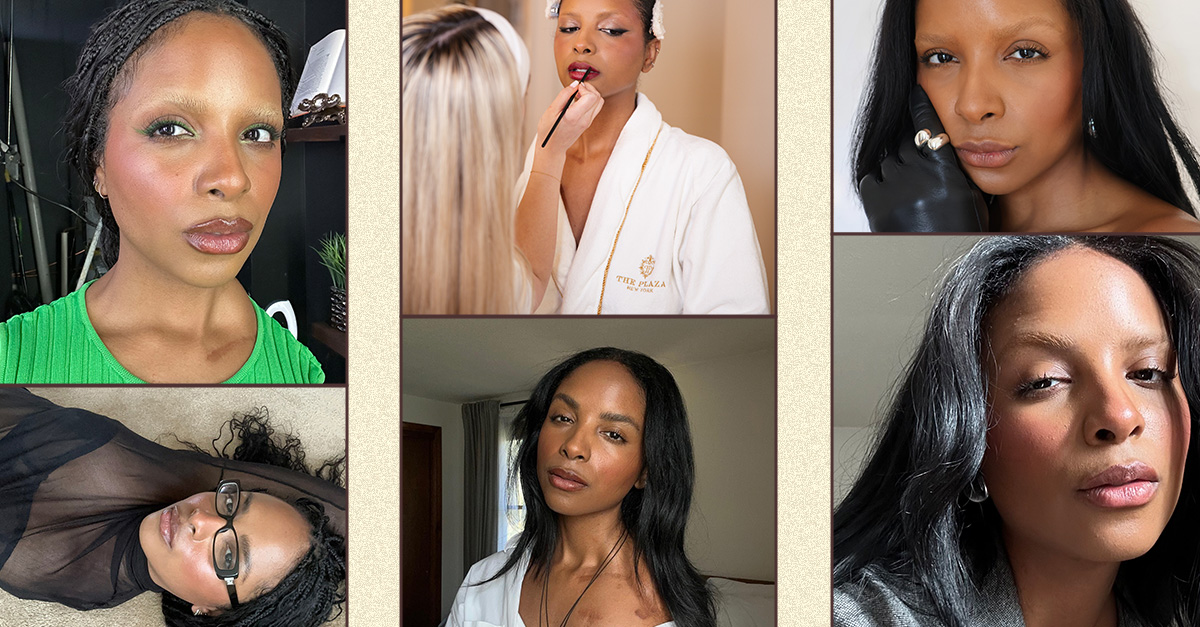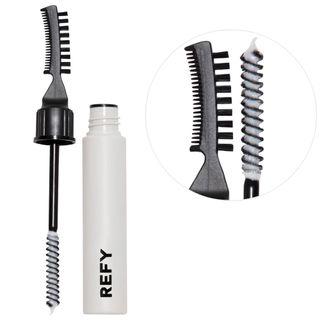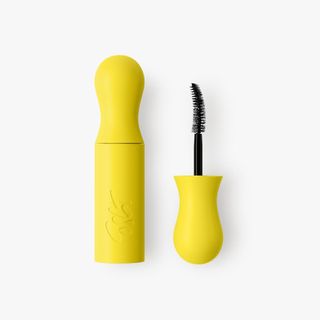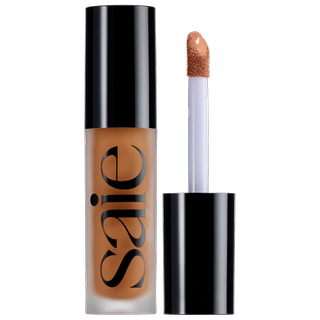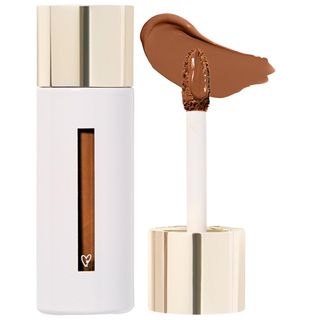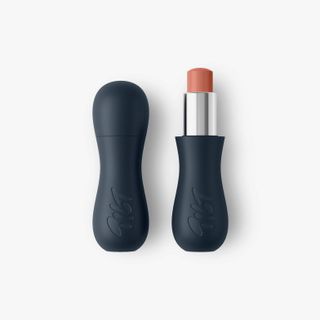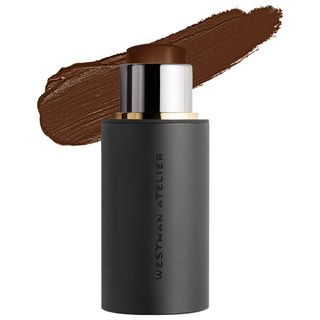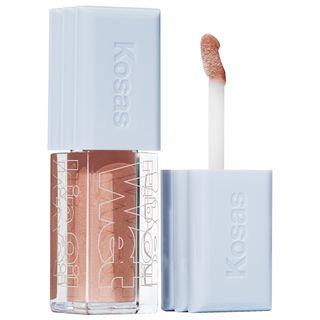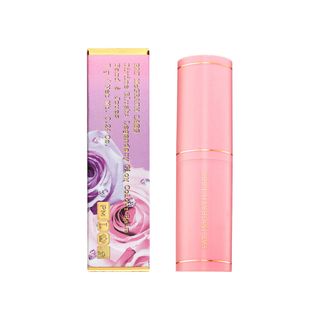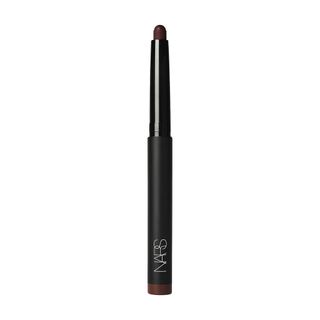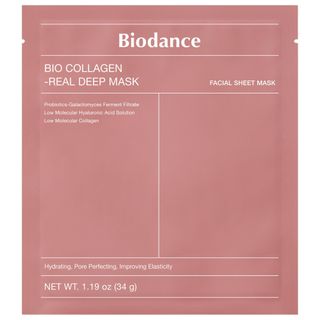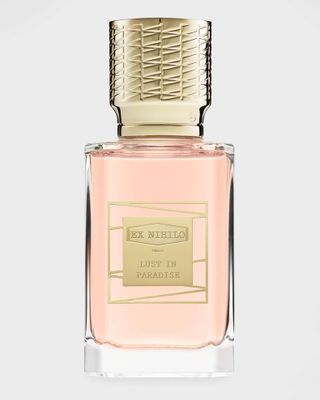As late as 1974, it was a crime to have visual differences. Called “unsightly beggar ordinances” (and later named the “ugly laws”), these grotesque regulations made it illegal for those with disabilities to “expose himself or herself to public view,” or they’d be met with fines and arrests for no other reason than demonstrating some type of visible impairment. It’s a stark contrast to Disability Pride Month, which honors what makes people unique. It’s also one of the reasons why Maya Moore—an amputee, model, and disability advocate—refuses to hide.
“If there aren’t clothes offered for people that are disabled or beauty products or things that we as a society deem ‘necessary’ to go out into the public sphere and feel like your most confident self, it says something about where we think people with disabilities belong,” she tells Who What Wear. It’s no secret that fashion and beauty play a significant role when it comes to challenging societal norms, and Moore champions these shifts in both subtle and outspoken ways. She dresses to accentuate her disability, providing endless style inspiration on her thriving social media accounts, she stars in countless fashion and beauty campaigns, and she works with many of those brands behind the scenes on inclusive marketing plans, all with the hope that people with disabilities can see themselves in an industry that so often equates “chic” with being white, thin, and able-bodied.
Embracing public perception hasn’t always been easy. “When I was wearing a prosthetic arm after my amputation, I was very much in an era where I wanted to cover up,” she shares. “From clothes to makeup, basically everything I was putting on my body externally was to distract from the fact that I was disabled.” Now? Beauty has become a vehicle for unapologetic self-expression. Whether she’s decorating her scars in rhinestones or carefully protecting them with sunscreen, Moore amplifies this version of herself—a version that, in her words, is “the most confident and comfortable in [her] disabled body as [she’s] ever been.”
Ahead, discover Moore’s personal relationship with beauty, what the industry can (still) do better when it comes to accessibility, and the luxurious, ergonomic essentials that help her feel absolutely seen.
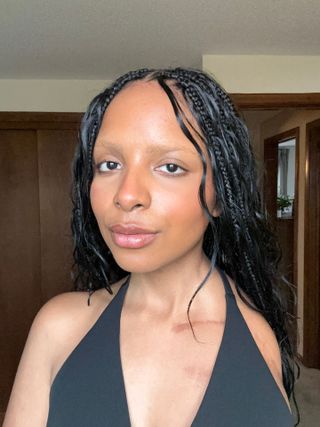
To start, what is your current relationship to beauty, and how has that evolved over the years?
I’m a millennial, so I definitely was a victim of really heavy-handed makeup at one point. [Laughs] I think that my journey with makeup has definitely evolved with my self-image. I realized I was wearing heavier makeup to cover up versus having fun with it. Now, as I’ve come into my own a little bit more and have been more comfortable with my sense of self and disability, I wear [makeup] to have fun, but I also don’t freak out or panic when I’m going out of the house with a bare face or very minimal makeup.
In high school, I would not leave the house without full concealer, foundation, blue eye shadow, mascara… My eyebrows were super filled in, [but] now, I like to play and experiment with looks a little bit more. As I’ve also come into my identity as a Black woman, a queer woman, a disabled woman, I’ve really leaned into ease and comfort as well as expression.
When I was wearing a prosthetic arm after my amputation, I was very much in an era where I wanted to cover up. … From clothes to makeup, basically everything I was putting on my body externally was to distract from the fact that I was disabled. Now, I just love playing and experimenting, whether I’m doing a photo shoot or just leaving the house. It’s taken [out] a lot of the worry of how somebody’s going to perceive me. It’s more about how I feel about myself.
It’s Disability Pride Month, which, as we know, is meant to honor and celebrate what makes people unique. I feel like beauty has a natural role to play in that. I’m curious what you think—what role does beauty play in helping people feel seen?
I think beauty is a vehicle to show just how diverse and vast we are as a community. A lot of times, we get put into this very narrow category where we’re seen as a monolith. We vary. [We] have a spectrum of taste and interests and styles like everyone else, so I think that beauty is an amazing vehicle to show that we all love showing up in the world as our best self. Beauty is a way that we express to people who we are.
Some people will say that [beauty] is trivial, but think about disability history and the ways that disabled people—as late as the ’70s—were restricted from entering public arenas. If there aren’t products that disabled people can wear or access that allow them to go out into the world as their most authentic self, then [it’s hard to] participate in social arenas, go out, and do all of the things that make life worth living.
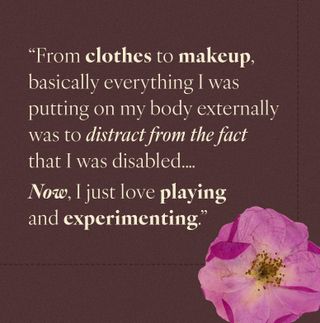
Totally. People who say that beauty is superficial probably have the privilege of not using it for, say, gender affirmation or accentuating unique features that make them feel really beautiful. It can be really powerful in that way.
That’s exactly how I feel. Whether it’s somebody affirming their gender, accentuating their vitiligo, dressing up a facial difference, or somebody like me who learned how to do their entire beauty routine with one hand in order to reclaim that sense of self and independence—beauty is so important. It’s self-care, and everybody deserves self-care, no matter what it looks like. For some people, it might just be CeraVe on their face; other people might want to have a full beat and everything in between. When we give people access and representation in the beauty space, it just lends to that mission of showing how important it is.
You’ve previously talked about how you love dressing in ways that accentuate your disability. I’m curious if you ever use beauty in a similar way.
Yes! One of the first photo shoots I did coming out of the [COVID-19] lockdown—when I started to play with this idea of not wearing my prosthetic arm in public anymore and altering my clothes to fit my body as an amputee—was a home photo shoot where I took rhinestones and body glitter [and] essentially decorated my scar where my amputation site is. It was the first time I had done something that Tumblr-esque in years, but it felt good to play with makeup and apply it to a part of my body I had, for years prior, gone out of my way to hide. Taking those photos and seeing the way that it made me feel beautiful influenced how I see myself. Makeup has always been a way to express myself, but now, it’s more about helping me go out in the world as this version of myself, which is the most confident and comfortable in my disabled body as I’ve ever been.
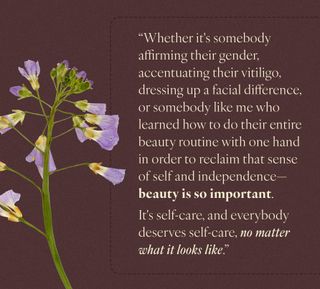
Moving on to product specifics, I’d love it if you could walk me through your current beauty routine, especially for a fun event or work opportunity.
I recently bleached my brows. I did this after years of feeling really insecure about how thin they were post-chemotherapy. I used to have really thick, fluffy brows like my mom—they run on her side of the family—and I loved them, but they just didn’t come back to their natural state after chemotherapy. I had struggled with trying to find pens, drawing hairlike strokes, and playing with powders. It just always felt like I was falling back into that pattern of wearing makeup to cover up or hide something I felt insecure about. Bleaching my brows has unlocked a whole new level of confidence in my beauty routine.
I usually start with Refy’s [Brow Sculpt] just to make sure that they are staying up and you can see them in all their blonde glory. It makes me feel like they really stand out as the statement on my face. Then because my eyebrows are bleached, I love having really pretty lashes. Tilt’s LashScape is, hands down, my favorite mascara.
Outside of that, I would say that I’m really focused, especially during the summer, on just having dewy, glowy, skin-forward looks. I try my best to work with the humidity and the natural sweating that happens when you’re out on the East Coast—New York specifically. You almost don’t have the choice but to have a dewy look in the middle of July. [Laughs] So I am very skin-forward. I love Saie’s concealer. I love Westman Atelier’s concealer, and Pat McGrath has these amazing blush sticks that are easy to open and have really beautiful pigment. I use the shade [Divine] Rose.
That’s my full face, and I’ll usually end with a really good moisturizing lip. Again, with the humidity and sweating, anything else is probably going to be off my face by midday. I also love Tilt’s Grip Stick. It comes in a bunch of cute different shades. Coffee Break is my favorite. It’s really close to the natural color of my lips, so it just ties everything together for my everyday look. If I’m going out at night, I love to punch it up a little bit more [by] adding a smoky shadow and really doubling up on the mascara. Nars has a shadow stick that’s nice because it looks really good with just mascara, and it amps it up for nighttime. I have the color Rebellion. It’s a matte, rich, dark brown. But that’s my day-to-day, and I feel really good and confident when I have that combo on.
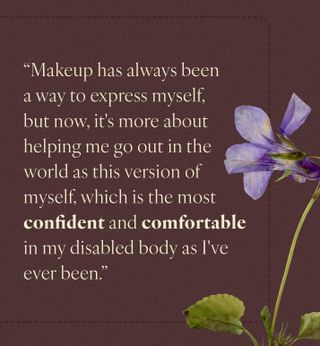
There are brands like Tilt that are specifically created to be super ergonomic, but are there any products in your routine that might not be necessarily marketed as accessible but you find are super easy to use with one hand?
Yes, yes, yes. There’s a Kosas lip oil called Unzipped that is super easy to open because it has ridges in the cap, so when you twist it, you can get good leverage. I also love Merit’s foundation stick. Foundation sticks, in general, are really easy for me to use because you can just remove the cap pretty easily. But I would say the hero that definitely doesn’t get the attention it deserves in terms of accessibility, packaging-wise, is Westman Atelier. [The brand] has products with magnetic caps that I absolutely love. I can’t believe I forgot to mention the contour stick in my daily routine! The contour stick in Ganache along with the Tilt products are my heroes. [They’re] easy-to-open, amazing products that don’t break me out and work with my skin. … Just amazing. The magnetic cap is everything.
In terms of where the beauty industry still falls short when it comes to accessibility, would you say representation is the biggest gap?
I think it’s twofold. The first thing that comes to my mind is representation because I think that that just pushes the needle forward on disability visibility. Media sets such an important tone for how we view people that are different from us. If you don’t see people with disabilities as somebody who’s nondisabled in ads, it may shape how you interact with them in real life. For people with disabilities, seeing ourselves represented in one of the biggest industries in the world [shows] us that there are still ways for us to participate in things like beauty and fashion. It gives us hope that our life has meaning and that there are still good things—despite a lot of the stereotypes that sometimes get put on people with disabilities.
One in four people have a disability, so it does make sense to have somebody with a disability in your campaign. Odds are that somebody, somewhere, with a disability has either used your product, interacted with your media, or has an interest in potentially using your product. [It’s] just good business.
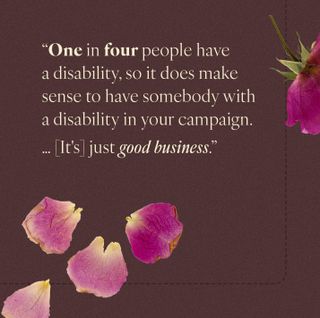
But I would say the second part is innovation. … One of the hard things when I was growing up with a disability was that every time there was a cool release—a cool new sneaker, cool new piece of clothing, makeup product, etc.—there was never anybody that looked like me in the campaigns. The stuff offered to me was very medical, uninspiring, and didn’t really make me feel hopeful that my life would still be full and I could still participate in the things that were important to me. When I think about Tilt and the amount of effort and love that’s gone into pushing [products] out in a way that does feel like something cool that not only people with disabilities want to partake in, it’s something that’s drawing the attention of people without disabilities. That means something to somebody like me.
That aspirational factor gets lost a lot of time when we talk about accessible products. It becomes sort of sad and medical. … You feel othered in the shopping experience. Tilt is breaking the mold in creating a space that everybody wants to go to. They’re drawing in an audience that is cool people with disabilities [and] cool people without and showing us in an aspirational light, which I don’t think any brand has really done.
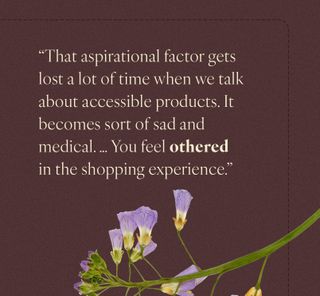
Back to your specific routine—are there any beauty rituals that you like to do, either before an event or just any time you want to feel more confident?
I am very much a chronically online person, and I love the Biodance masks that melt into your face if you keep them on, like, your whole work-from-home day. It might be a “camera off” day for me the day before an event if I have one on while I’m at home taking meetings. My skin always looks amazing under my foundation, so I love building that into my routine. Especially as I’ve entered my 30s, I am so keen on taking good care of my skin.
There’s a new fragrance I tried, and I am obsessed with it. It’s Ex Nihilo Lust in Paradise. Wherever I go and people say that I smell good, I have this on, so I always have to spray this before I leave the house. I have the little travel one, and I have the big one on my dresser. My grandmother was the first amputee I ever had in my life, and she was huge about fragrance. … I always will not leave the house without it.
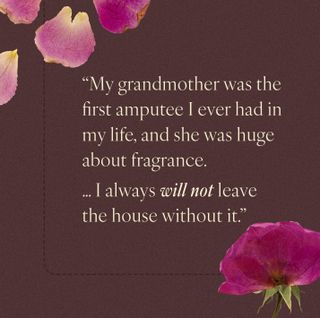
Why do you think she loved fragrance so much?
She had a chronic illness. She had lupus and type 2 diabetes, so she had both of her legs amputated below the knee when I was 7 years old. She was the first person with a disability I saw romanticize this idea of self-care. She is a huge influence on my beauty routine. Even if she was going to a doctor’s appointment, she would spray on her fragrance, put on her lipstick, put on her face cream, put on her mascara, [and] do whatever made her feel best to show up at that appointment, even if it was going to be a hard day. She was like, “That’s what I have within my control. I want to look my best no matter what.”
It just made me see how self-care beauty routines have the power to uplift people in that way. You never know when disability might impact your life, but her approach of being like “It doesn’t fundamentally alter who I am in terms of how I show up in the world appearance-wise and self-confidence–wise” was an important lesson for me that I still carry. It helped me realize that beauty and self-care can be transformative. They can be healing.
The beauty industry still has a ways to go when it comes to accessibility. What would you like to see in the next five years?
I was at a CFDA/Vogue event with Tilting the Lens, and Sinéad Burke—who was the creative mind behind the first disabled models to be on the cover of British Vogue—said something that I think is going to echo throughout fashion and beauty. People with disabilities, we are a massive population. Even people who may not necessarily identify as somebody with a disability [can] technically fall in that category or have people in their family or friend group who are. What she stressed is that designing with accessibility in mind is not something that we should see as limiting or a detriment to creativity. If anything, it’s an opportunity to reimagine things and make them better for everyone, to give people greater access to things that we know improve our self-esteem.
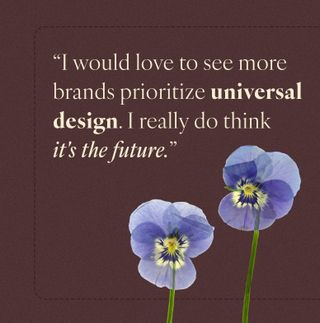
Beauty has such a transformative power to make people feel good about themselves, whether it’s how they show up in the world or to just have control over things at a time when a lot feels out of your control. She stressed that it’s a market opportunity. You’re not only doing the right thing by having accessibility in mind, but it’s just smart business to design things that are easier to open. It helps everyone. Nobody wants to struggle to open a compact of bronzer and have to go ask their partner to help them or have a tube of mascara so tight that they’re making teeth marks in the mascara trying to open it.
I would love to see more brands prioritize universal design. I really do think it’s the future. You never know when disability will impact your life, whether it’s yourself or somebody you love. It’s not fearmongering; it’s just the truth. And it’s an opportunity, more than anything, to be more considerate of our imminent interaction with disability and of people around us. Being a good human is to consider accessibility. I would love beauty brands to approach it that way—something to improve market value but also something to improve the world and the way that we view, interact, and care for each other.
Shop Maya Moore’s Beauty Staples
Explore More:

